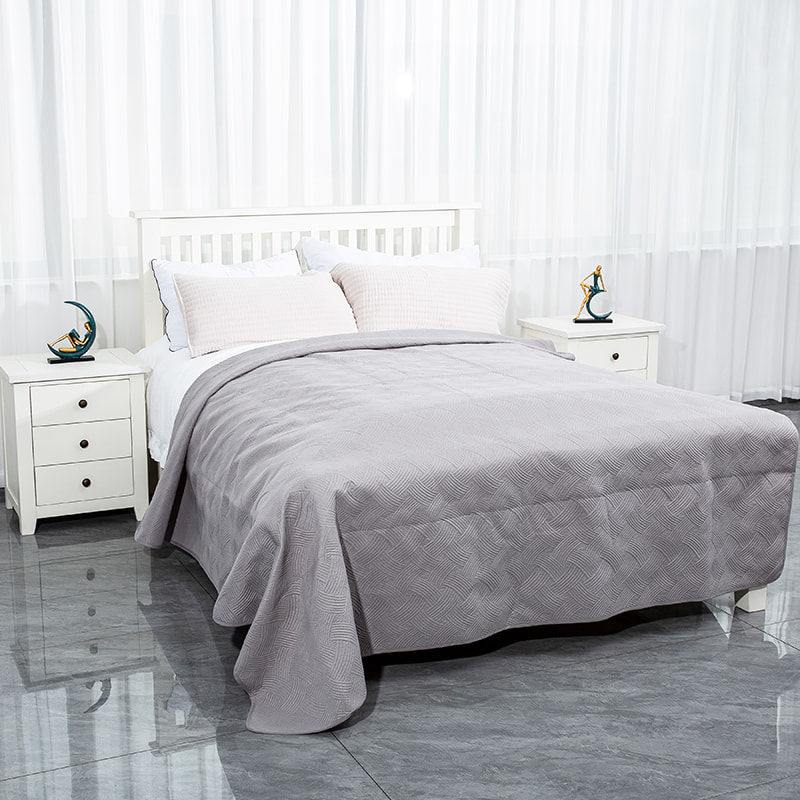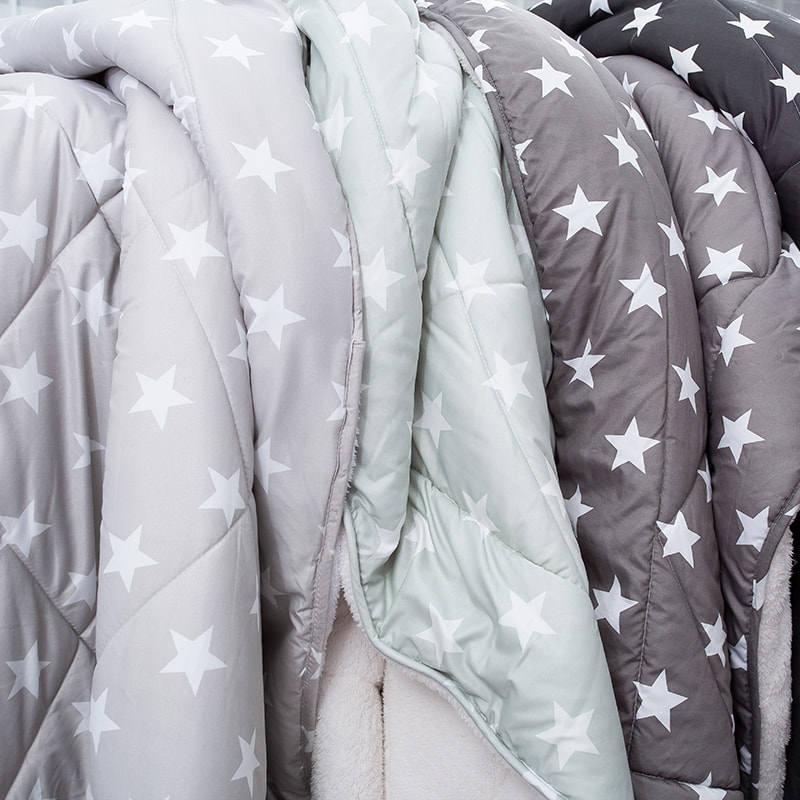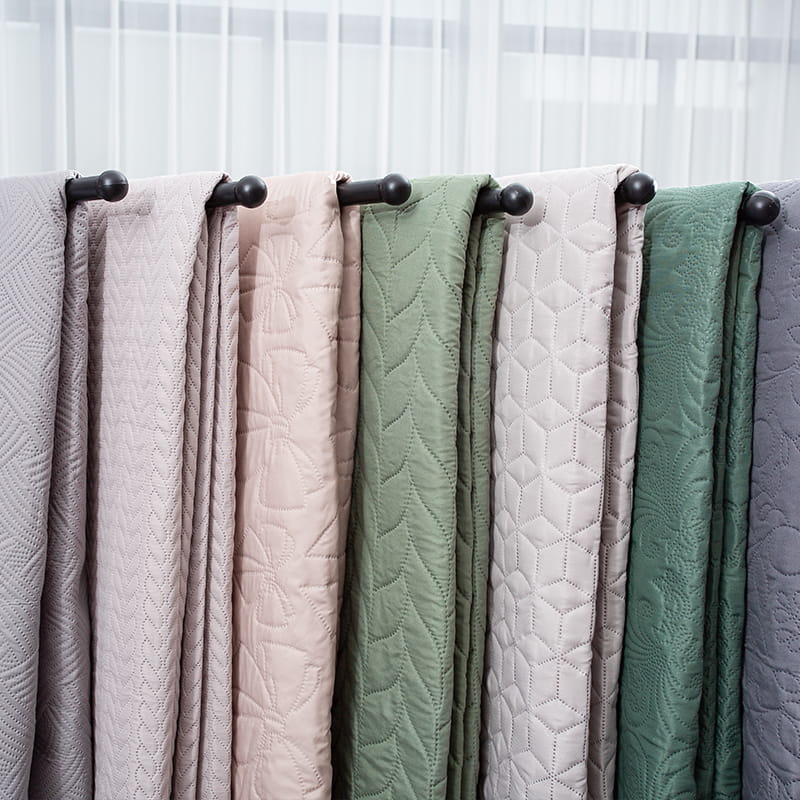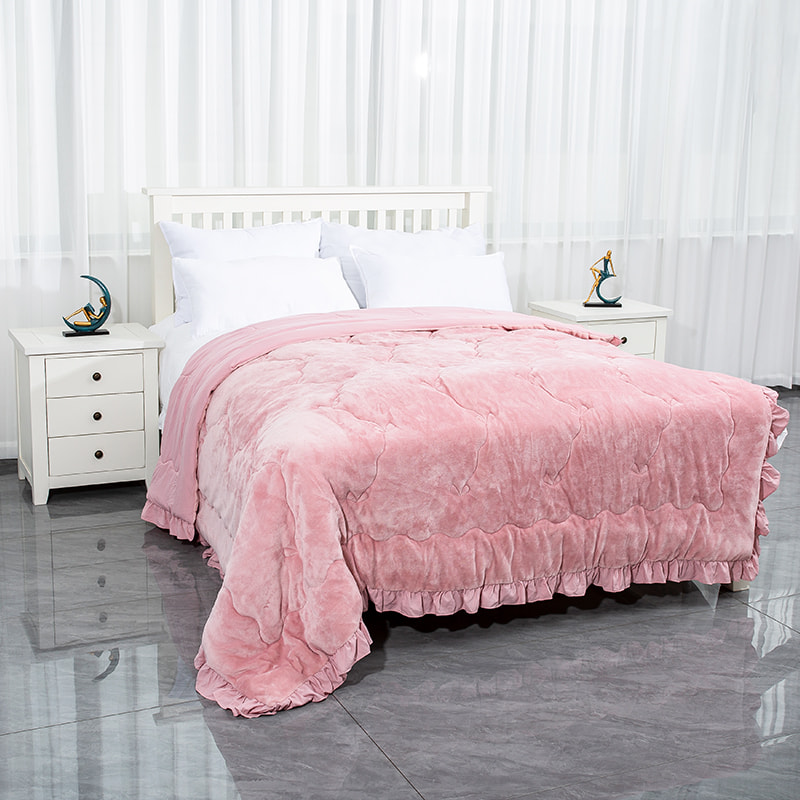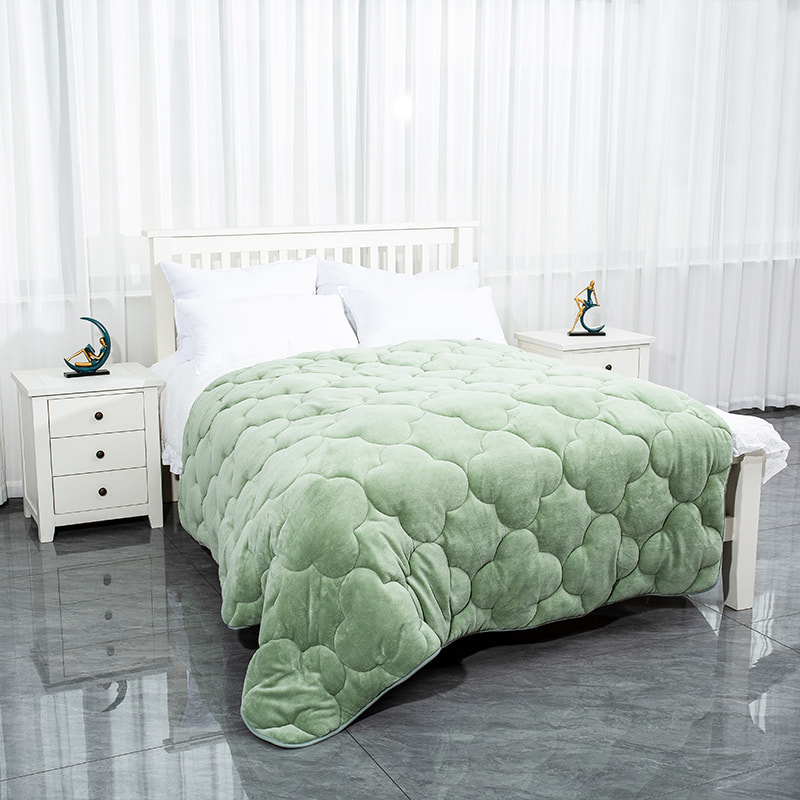How does ultrasonic welding eliminate the structural defects of bedspreads?
The emergence of ultrasonic bedspreads, with its seamless welding process, reconstructs the connection method from the material molecular level, completely solves the durability and stability problems left by traditional processes, and opens up a new path for the manufacture of high-quality bedding.
The limitation of traditional bedspread manufacturing process lies in the contradiction between its physical connection method and material properties. Needle and thread sewing relies on pinholes that penetrate the fabric to achieve interlayer fixation. These pinholes not only destroy the continuity of the fibers, but also form stress concentration points on the fabric surface. When the bedspread is subjected to mechanical forces such as pulling, folding or washing in daily use, the fibers around the pinholes are weakened and easily break, which in turn causes problems such as loose stitches and tearing of fabrics. Although glue bonding fills the gaps with chemicals to avoid pinhole damage, the aging problem of the adhesive itself cannot be avoided. Over time and under the influence of environmental factors, the adhesive gradually loses its viscosity, resulting in separation between the multiple layers of the bedspread material, which seriously affects the performance and life. These two processes are essentially to achieve material combination through external force constraints, and it is difficult to achieve stable fusion at the molecular level.
The breakthrough of ultrasonic welding technology lies in converting high-frequency vibration energy into molecular-level bonding force. When the ultrasonic generator generates high-frequency mechanical vibration of 20kHz-40kHz and transmits it to the special welding head through the transducer, the welding head reciprocates on the surface of the bed cover material at a very high frequency. This high-frequency vibration causes the surface molecules of the material to produce intense friction, and the heat energy released instantly softens the fabric fibers. Under the synergistic effect of the welding head pressure, the softened fibers penetrate and fuse with each other to form chemical bonds between molecules. After cooling and curing, the welding area and the fabric body achieve seamless transition, completely eliminating physical seams. This process does not require needle and thread penetration or chemical adhesive intervention, but uses the physical and chemical changes of the material itself to achieve an integral connection from the surface to the inside.
Compared with traditional processes, ultrasonic welding gives bedspreads significant structural advantages. Since there are no pinholes or glue aging problems, the stress of the bedspread can be evenly dispersed on the entire material surface when it is stressed, avoiding the generation of local weak points. When the bedspread is pulled quickly, the traditional sewn bedspread may tear due to fiber breakage at the pinholes, while the ultrasonically welded bedspread can withstand greater tension due to the continuity of molecular-level fusion; during frequent washing, the traditional bonded bedspread is prone to delamination due to detergent erosion of the adhesive, while the ultrasonically welded bedspread maintains its integrity due to its stable structure.

 English
English 中文简体
中文简体 Español
Español previous post
previous post


